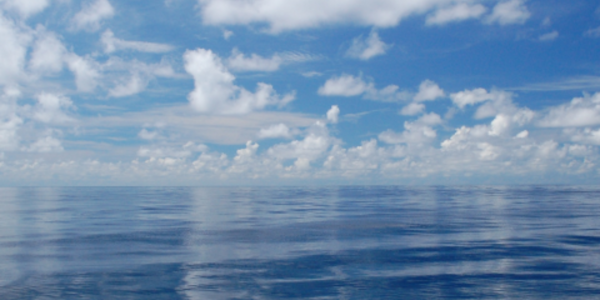
NCEI has released three new climatology fields for the World Ocean Atlas: density, conductivity, and mixed-layer depth (MLD). The MLD field is of particular interest as it is the only known MLD climatology available at 1/4 degree horizontal resolution.
The World Ocean Atlas (WOA) provides researchers with the data they need to determine the influence of the ocean on Earth’s climate and environment. The WOA is the largest and most comprehensive collection of scientific information about Earth’s ocean. It consists of long-term climatologies—long-term histories of conditions—such as water temperature, salinity, oxygen, phosphate, silicate, and nitrate for annual, seasonal, and monthly periods, created from the observational data in the World Ocean Database (WOD).
Building a Baseline
The WOD forms the basis for the World Ocean Atlas. Whereas the WOD is a database, the WOA is a product that uses the WOD data as the infrastructure to develop climatologies. WOA contributes to NCEI’s quarterly Ocean Heat Content reports and the Global State of the Climate reports.
There are 102 levels, from the ocean surface to 5,500 meters deep, which can be used in studies of many oceanographic processes. WOA can also be used in high-resolution models or in more accurate quality control of observational datasets.
Without a baseline for comparison, it is impossible to understand how the world’s ocean is changing. The Atlas provides the information needed for many studies including changes in ocean heat, dissolved oxygen, and salt content. The worldwide data are indispensable tools for scientists in their pursuit of understanding the impact of the ocean on Earth’s climate and environment.
Why Density, Conductivity, and MLD?
Density climatological fields were calculated by first deriving density (a function of temperature and salinity) for each profile within the WOD and then mapping these values into long-term averages. The density climatologies portray the large-scale predominant circulation features of the ocean through the water column.
The conductivity field is a measure of how well seawater can conduct electricity. The warmer and more saline seawater is, the more conductive it becomes. Conductivity is often directly measured by a Conductivity, Temperature, and Depth (CTD) instrument, with salinity being derived from conductivity. Since conductivity is rarely reported by scientists collecting measurements (salinity is much more commonly reported), conductivity was calculated based on each WOD profile’s temperature and salinity measurements, and these conductivity values were then mapped into long-term averages. Conductivity is an important variable as it is a fundamental parameter in the ocean’s electrodynamics.
The oceanic mixed layer is the upper layer of the ocean that is well mixed through atmospheric processes (e.g., wind stress, heat fluxes) and ocean turbulence. The depth for which this mixing ceases is referred to as the mixed-layer depth or MLD. The mixing causes near-constant density, temperature, and/or salinity from the surface to the MLD. For the MLD in WOA, a density threshold was used, which calculates MLD based on a change in potential density from 10 meters depth. The mixed layer deepens, leading to ocean ventilation and shoals throughout the year. The mixed layer is where heat, oxygen, carbon, and other important ocean variables can be transferred from the air to the water. It is also a zone in which biological activity is generally enhanced.
Discover Our Data
Using the WOASelect, users can designate a geographic area, depth, and oceanographic variable to view subsets of the Atlas. WOASelect filters climatological averages or related statistics for a variable at the requested depth for a specified region and then creates a visualization.



